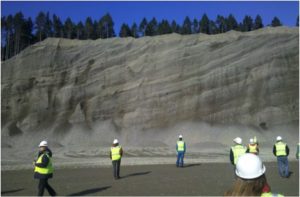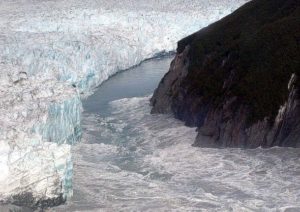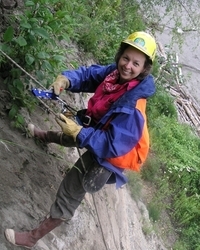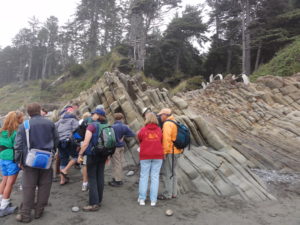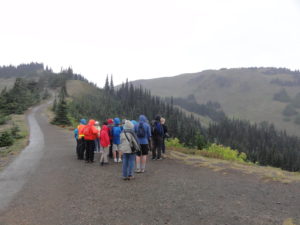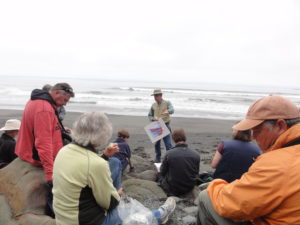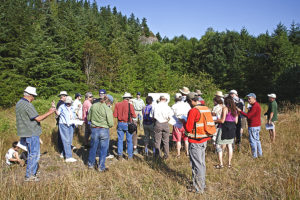
About the Field Trip
Geology of the Quilcene to Center Area (Center Road)
Leaders: Michael Polenz*, Trevor Contreras*, Harley Gordon*, Ian Huber*, Jeff Tepper, and Carol Serdar Tepper
The purpose of this field trip is to review the geology of the southern part of the Quimper Peninsula (sites between Chimacum and SR104 between Discovery Bay and the Hood Canal bridge), which has been mapped recently by geologists* at the WA Dept. of Natural Resources. The main focus is on the Tertiary bedrock of the peninsula and the history and deposits of late Pleistocene glaciation, which created most of the present landscape.
The trip will start at 8 am at the Chimacum High School parking lot, where we will assemble our caravan of carpoolers. Minimizing the number of cars is critical since some stops will be along narrow road margins. There will be as many as eight stops, so it’s a full and arduous day with some hiking over uneven ground. You should bring a bag lunch and other personal items (rock hammer, hand lens, sunscreen), but we will provide water and beverages for lunch. The trip will culminate with an open-ended stop for cider, wine, bread, cheese, and chats at the Finnriver Farm (@ 5 pm), one of the Jefferson Land Trust’s farm partners.
We must limit the participants to 25 so don’t delay if you want to be on this rather hard-core geology field trip. Cost of the trip is $20, which we’ll collect on the morning of the trip.

